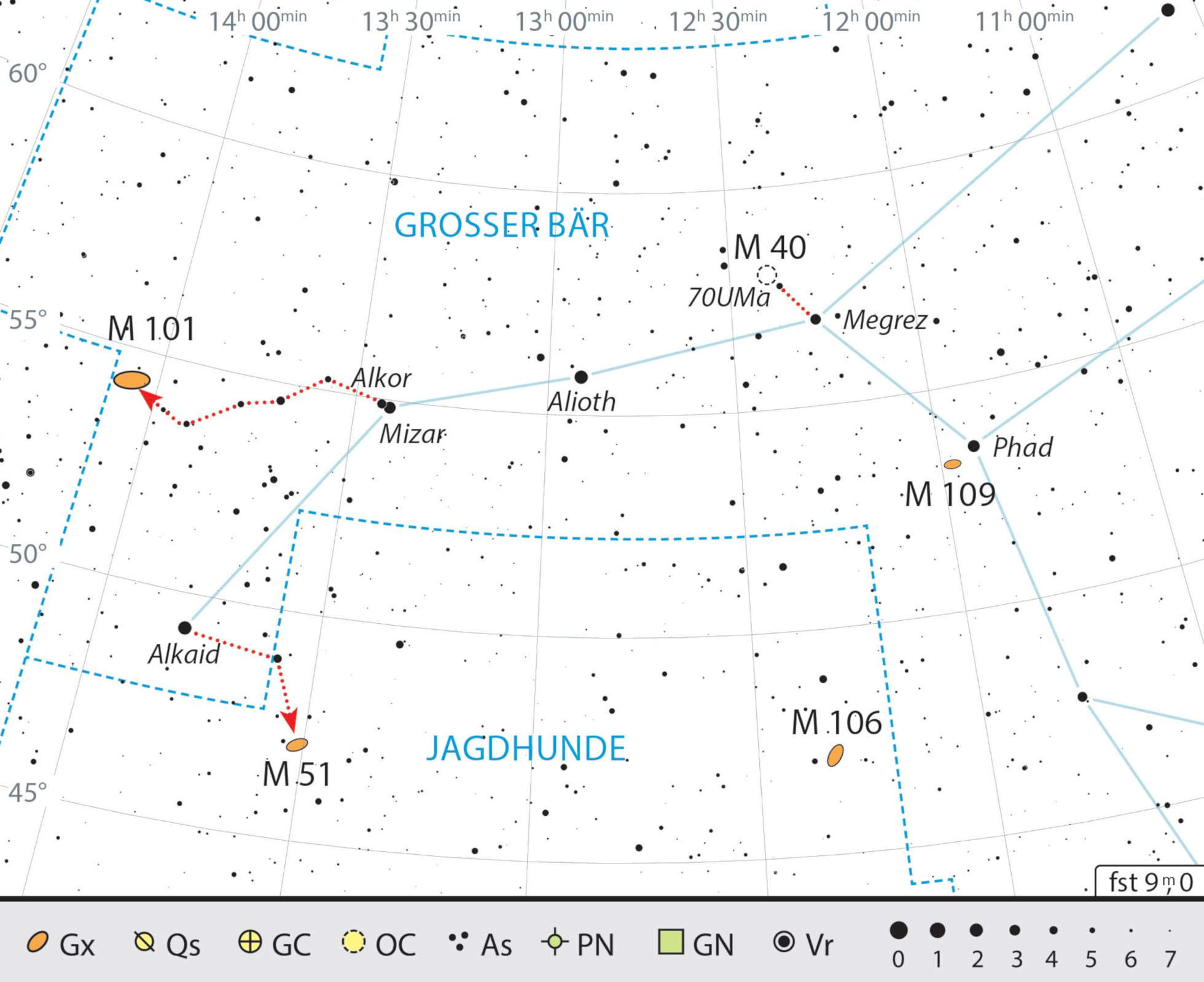Around the handle of the Big Dipper
The Pinwheel and the Whirlpool are two of the most beautiful galaxies in the entire night sky – and a curious Messier object that isn’t one.
 The Big Dipper is circumpolar at our latitude, however the fainter celestial objects tend to disappear in the haze close to the horizon. Marcus Degenkolbe
The Big Dipper is circumpolar at our latitude, however the fainter celestial objects tend to disappear in the haze close to the horizon. Marcus DegenkolbeThe Big Dipper is one of the easiest formations of the sky to find, it is actually part of the constellation of Ursa Major. You will find some interesting objects to observe with binoculars around its so-called "handle”.
Vast galaxies
Two of the most beautiful galaxies can be found close to Alkaid and Mizar, the last stars in the Big Dipper’s handle. Galaxy M101 forms an almost equilateral triangle with these stars. From Mizar, it can also be found via a winding chain of magnitude 4 to 7 stars. More important than the size of the optics is a dark sky and good dark adaptation, since although M101 is quite large, it is unfortunately rather faint. If the sky is dark, then even with small binoculars you will be able to make out an unstructured misty form, with 10×50 binoculars this mist is over 10' across and slightly oval in shape.
The second stop on our tour, M51, is located just 3.5° southwest of Alkaid and forms a square with three magnitude 7 stars. This galaxy, which belongs to the constellation of Canes Venatici, is just visible even through smaller binoculars if you use averted vision, that is, if you look slightly past the object. Through 10×50 binoculars, it appears slightly oval and about half the size of M101. If the seeing is good, you will even be able to make out the cores of the main galaxy M51 and its companion galaxy NGC 5195.
 Exploring the objects on this tour is straightforward, thanks to the easy-to-find starting points. J. Scholten
Exploring the objects on this tour is straightforward, thanks to the easy-to-find starting points. J. ScholtenProminent fakes
The most unusual Messier object is M40. Charles Messier himself recorded a binary star at this location, but still included it in his catalogue of nebular objects. Easy to find via Megrez and star 70 UMa, with binoculars you can see two magnitude 9 stars at a distance of 49". It’s considerably easier to see the two as separate objects if you use a tripod, but is also possible free-hand.
The story of the magnitude 7.6 star Sidus Ludoviciana is even more curious. It is located between Mizar and Alkor and was mistaken for a planet by the German mathematician and astronomer Johann Georg Liebknecht in 1722 because he thought he detected it moving. It can be seen through any binoculars just south of the line connecting its more famous neighbours.
A tough task
M109 is one of the fainter Messier galaxies. It is located only 40' southeast of the binary star Gamma Ursae Majoris (also known as Phecda or Phad), but requires good conditions and some observation experience. Then a faint, small misty object becomes visible in medium-sized binoculars such as 10×50.
Author: Kay Hempel / Licence: Oculum-Verlag GmbH
